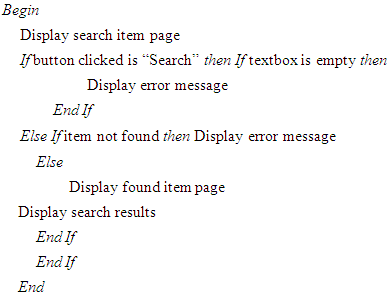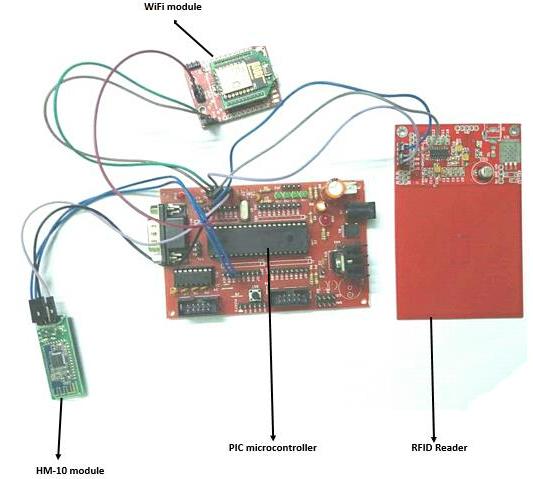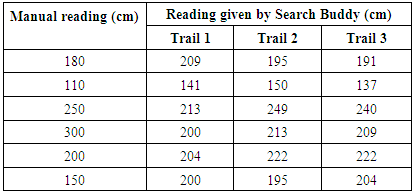-
Paper Information
- Next Paper
- Previous Paper
- Paper Submission
-
Journal Information
- About This Journal
- Editorial Board
- Current Issue
- Archive
- Author Guidelines
- Contact Us
International Journal of Internet of Things
2017; 6(2): 78-82
doi:10.5923/j.ijit.20170602.15

Search Buddy: A Search Engine for Physical Objects
Supritha, Tanya Rego, Vimple E. Mascarenhas, Yashika, Shreenath Acharya
Department of Computer Science and Engineering, St. Joseph Engineering College, Mangaluru, India
Correspondence to: Supritha, Department of Computer Science and Engineering, St. Joseph Engineering College, Mangaluru, India.
| Email: |  |
Copyright © 2017 Scientific & Academic Publishing. All Rights Reserved.
This work is licensed under the Creative Commons Attribution International License (CC BY).
http://creativecommons.org/licenses/by/4.0/

In our day to day activities, we tend to lose or misplace various items and end up wasting valuable time searching them. Most of them include wallets, keys, mobile phones and other useful items. In this case, the search relies on our ability to remember their previous location or searching in random places. Hence the search could easily result in failure to locate the lost item. In terms of searching information online, locating physical objects is rarely supported by technology. Hence Search Buddy acts as a search engine for physical objects and helps to locate lost items with more accuracy than a manual search. In Search Buddy, a Search Kit contains the main search module which consists of the PIC microcontroller, the HM-10 module and Wi-Fi module. This can then be setup in a home with minimal configuration. The items to be searched are attached with a beacon module which gives the relative distance with respect to the HM-10 module. Improvement in Bluetooth technology can fetch accurate results and miniaturization of item beacon modules could be done in order to facilitate direct integration into physical objects.
Keywords: RFID tags, HM-10 Module, Beacon, RFID Reader, Wireless communication
Cite this paper: Supritha, Tanya Rego, Vimple E. Mascarenhas, Yashika, Shreenath Acharya, Search Buddy: A Search Engine for Physical Objects, International Journal of Internet of Things, Vol. 6 No. 2, 2017, pp. 78-82. doi: 10.5923/j.ijit.20170602.15.
Article Outline
1. Introduction
- Searching for lost keys, wallets or mobile phones is a common nuisance. Compared to digital information, search support for physical objects is very limited. An average person misplaces up to nine items per week and spends about 15 minutes per day searching them. Mobile phones, keys, and sunglasses are among the most frequently lost items [1]. Losing those items can waste a lot of time, money, and cause headaches. While searching for digital information is a well-supported everyday task, searching for common physical objects is not supported by current technology. Mobile phone trackers enable remote localization of lost phones with GPS, WiFi, or based on cell of origin. However, such approaches are not applicable for smaller objects, such as keys or wallets, and have difficulties with objects indoors.Previously proposed systems for physical object search require the user’s presence and active participation in search.The objects are equipped with low-power optical sensors; a special flashlight to trigger audio-visual feedback of objects. While highly energy efficient due to the use of low power sensors, objects must be in the user’s visual range.Further sections of this paper are related work in section 2, System architecture in section 3, technology used covered in section 4, implementation under section 5, and experimental results and analysis that covers a detailed explanation of the proposed system in section 6. Last section of the paper gives conclusion and future work of Search Buddy.
2. Related Work
- In the paper proposed by Pascal Knierim, et al. [1] localization of Stuff follows the introduced layered search model. Once the desired Stuff could not be found with RFID localization, relative localization with ZigBee is triggered. The server sends a message to the Stuff via SmartFurniture. The Stuff sends beacons as broadcast messages. Each SmartFurniture that receives the beacons measures received signal strength (RSSI) for all its antennas. These values are used to calculate the direction of the Stuff. Direction estimation and RSSI values are reported to the server’s result queue. Note that the signal strength is interpreted as a distance metric in this model, which can be problematic due to variations caused by external influences. To compensate for this, values are checked for consistency and a weighting factor can be included reflecting the number of received beacons. The resulting position is returned as the search result together with a stored image of the searched object.Search Buddy is a search engine, for finding misplaced physical objects in common indoor environments, like homes or offices. It offers a typical search engine interface to let users search for lost objects. The Search Kit contains the main search module which consists of the PIC microcontroller, the HM-10 module, RFID reader and Wi-Fi module. This can then be setup in a home with minimal configuration.Physical objects are made searchable by attaching or integrating a beacon module to the objects which is detected by the HM-10 module. RFID is a wireless communication means which uses RF electro-magnetic fields to identify and track tags attached to objects . An RFID system involves tags, readers, and antennas. RFID tags can be passive, active, or battery-assisted passive tags [2]. The RFID tags initiate the search, this is used as a security measure, such that only the user who has that particular tag can search for their missing items. This Safety mechanisms prevent abuse of the system and protect user privacy. The search results give the distance of the object, i.e. the distance between the HM-10 module and the beacon.
3. System Architecture
- Proposed system consists of multiple components. The Search Kit consists of the PIC microcontroller, the Wi-Fi module, RFID reader and the HM-10 module. The iBeacon is attached to the object. The PIC microcontroller (Peripheral Interface Controller) is an electronic circuit that can be programmed to carry out a vast range of tasks. Hence it functions as the centre most component in search buddy, governing all the other components like the Wi-Fi module, the RFID reader and the HM-10 module to conduct the search process. The Wi-Fi Module is a self-contained module with integrated TCP/IP protocol stack that can give any microcontroller access to a Wi-Fi network. With the help of this module, the distance of the object is updated in the database and displayed to the user in the search results of the user interface. The RFID reader is used to initiate the search process with the RFID tag. The underlying communication technology is Bluetooth Low Energy. Bluetooth Low Energy is a wireless personal area network technology used for transmitting data over short distances. As the name implies, it’s designed for low energy consumption and cost, while maintaining a communication range similar to that of its predecessor, Classic Bluetooth. HM-10 is a BLE module for embedded system to get BLE wireless communication with BLE capable devices.
4. Technology Used
4.1. RFID Technology
- RFID stands for Radio-Frequency IDentification. The RFID tags, or simply "tags", are small transponders that respond to queries from a reader by wirelessly transmitting a serial number or similar identifier. They are heavily used to track items in production environments and to label items in supermarkets.RFID transponders (tags) consist in general of:Ÿ Micro chip Ÿ Antenna Ÿ Case Ÿ Battery (for active tags only) The RFID tags are distinguished by 3 types in relation to power or energy:Ÿ Passive Ÿ Semi-passive Ÿ Active
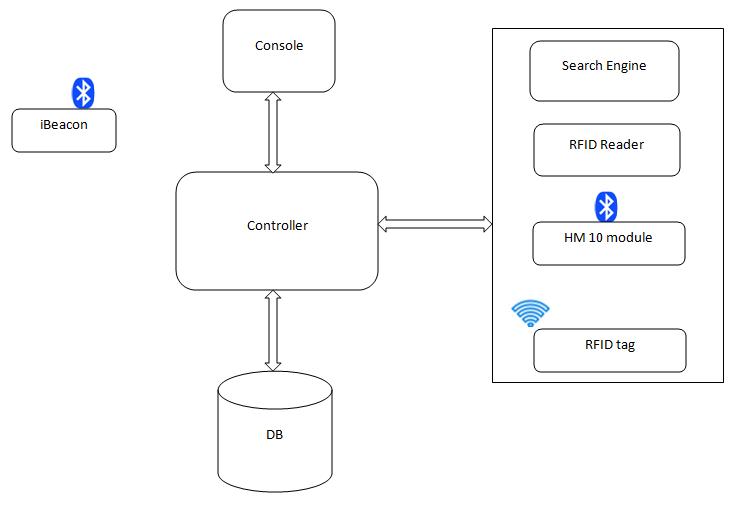 | Figure 1. Search Buddy architecture |
4.2. Beacon Technology
- Beacons are small devices that enable relatively accurate location within a narrow range. Beacons periodically transmit small amounts of data within a range of approximately 70 meters, and are often used for indoor location technology. Various types of beacons exist, which can be classified based on their type of Beacon protocol, power solution and location technology. Bluetooth Low Energy (BLE) has the ability to exchange data in one of two states: connected and advertising modes. Connected mode uses the Generic Attribute (GATT) layer to transfer data in a one-to-one connection. Advertising mode uses the Generic Access Profile (GAP) layer to broadcast data out to anyone who is listening. Advertising mode is a one-to-many transfer and has no guarantees about data coherence.iBeacons broadcast four pieces of information:Ÿ A UUID that identifies the beacon. Ÿ A Major number identifying a subset of beacons within a large group. Ÿ A Minor number identifying a specific beacon. Ÿ A TX power level in 2's compliment, indicating the signal strength one meter from the device. This number must be calibrated for each device by the user or manufacturer.A scanning application reads the UUID, major number and minor number and references them against a database to get information about the beacon; the beacon itself carries no descriptive information - it requires this external database to be useful. The Tx power field is used with the measured signal strength to determine how far away the beacon is from the smart phone. Please note that Tx Power must be calibrated on a beacon-by-beacon basis by the user to be accurate. [4]
4.3. Wi-Fi Technology
- Wi-Fi is the name of a popular wireless networking technology that uses radio waves to provide wireless high-speed Internet and network connections. Wi-Fi is the most popular means of communicating data wirelessly, within a fixed location. Devices that can use Wi-Fi technology include personal computers, video-game consoles, Smartphone, digital cameras, tablet computers, digital audio players and modern printers. Wi-Fi compatible devices can connect to the Internet via a WLAN and a wireless access point.
5. Implementation
- When the client sends a search request, the server starts the search process. A user’s objects are managed by a server, which provides a Web-based search interface and coordinates the search process. Figure 2 shows the Search Buddy search interface with the result of a search query for an object (“mobile”). The object’s position is indicated by a relative distance cue. Physical objects are made searchable with Search Buddy by equipping them with an iBeacon, which is attached to the object. Each object is associated with an iBeacon and a RFID tag containing a unique ID.
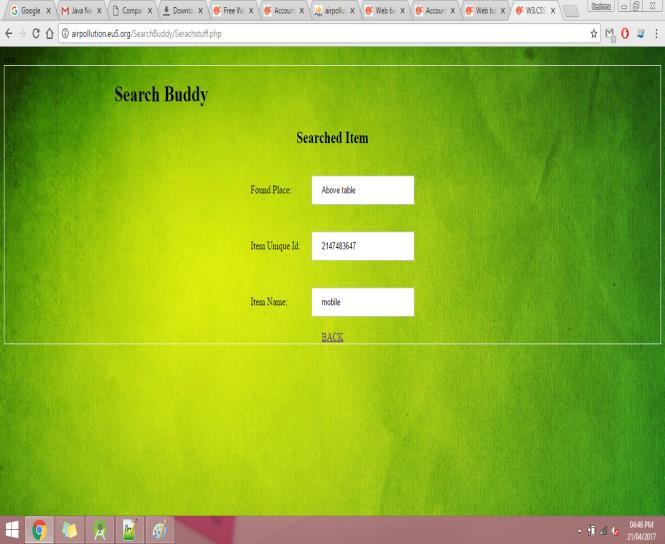 | Figure 2. Search Buddy search interface with results |
 | (1) |
5.1. Pseudo Code for Item Search
6. Experimental Result and Analysis
- The table depicts the relative distances of the object kept at six different locations. For each measured distance, four trials were conducted to get the nearest distance value. Accuracy of the result depends on the interaction between the HM-10 module and the Beacon, provided there is a good internet facility.From the Table 1 it is understood that Search Buddy provides an approximate distance of the object. However there could be a little variations (tolerance) between actual measured distance and distance given by Search Buddy which can be ignored as the distance is shown in centimetres.
|
7. Conclusions
- Search Buddy is easily usable and intuitive search engine for physical objects. To achieve the fine-grained localization accuracy, it took advantage of the virtual reference tags and the beacon- HM-10 module communication protocol. This system can be used in colleges, schools, offices etc. Going by the present scenario it is believe that this application will bring about a change in the lifestyle. A person can save time searching for lost items and also keep track of inventory and thus find it easier to manage time when it is scarce.Furthermore, by using more sophisticated microprocessor and beacons with a higher range, the search could be extended to wider environments and be useful in large organizations with multiple level of floors.
 Abstract
Abstract Reference
Reference Full-Text PDF
Full-Text PDF Full-text HTML
Full-text HTML